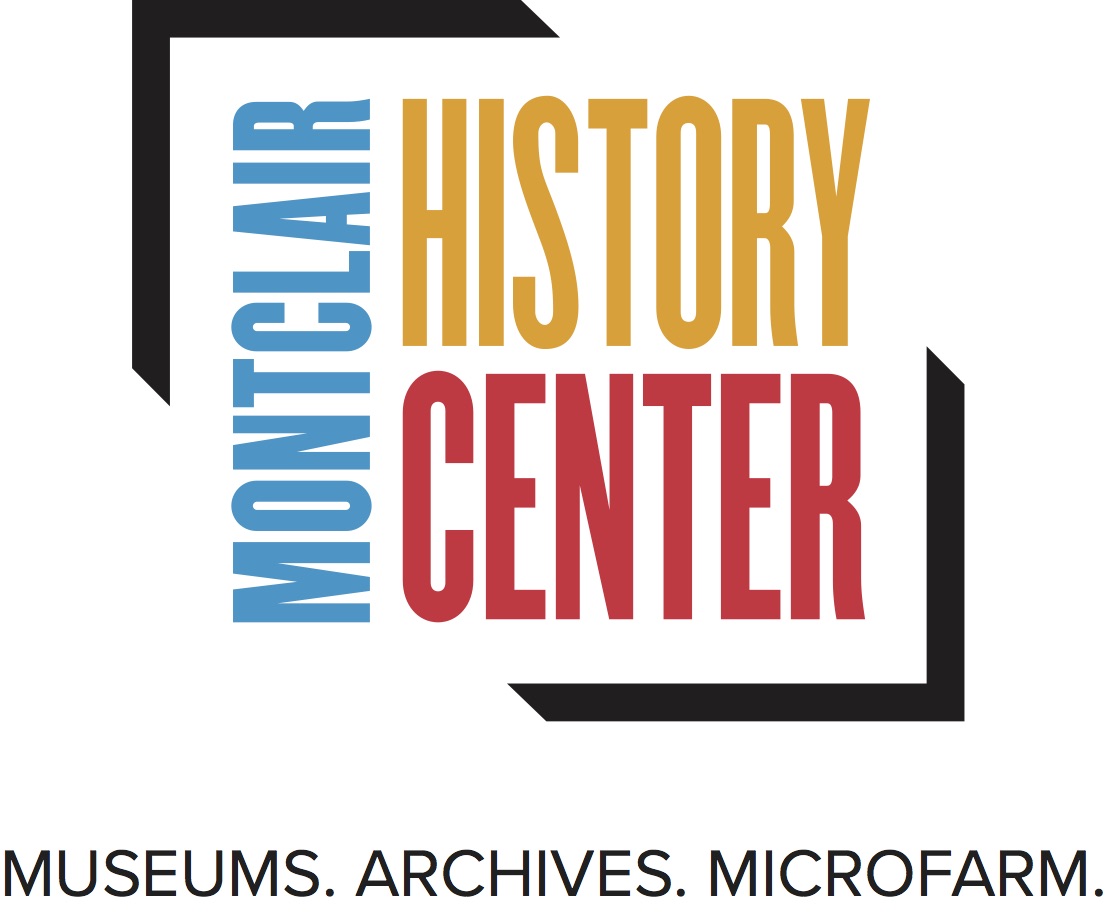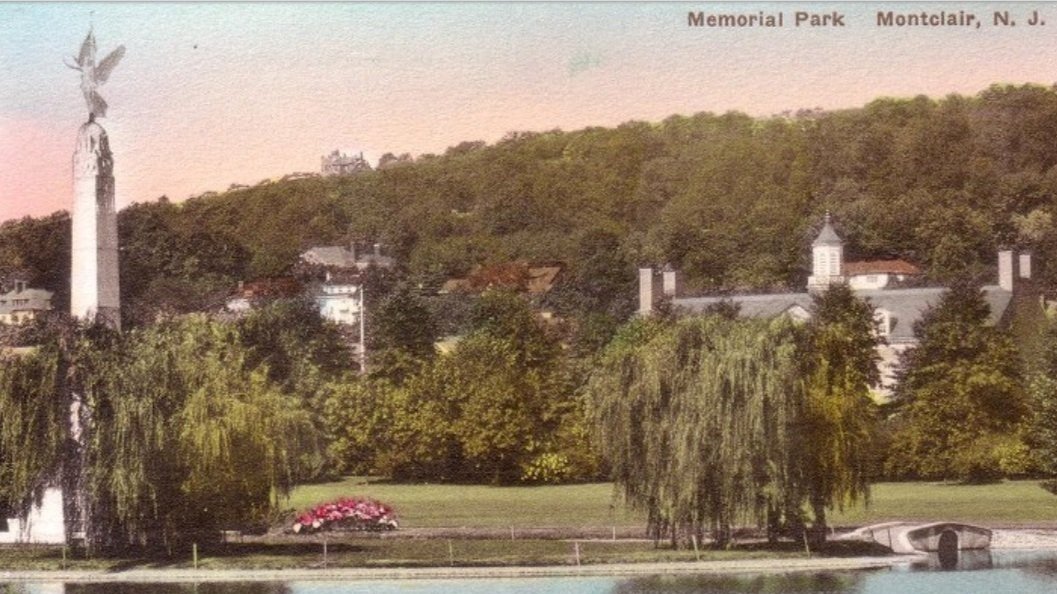Resources for Montclair Researchers
Edgemont Park postcard, MHC Collection
From Rosedale Cemetery to Montclair State University and everything in-between, we’ve got the resources for you to learn all about Montclair!
Self-Guided Tours of Montclair. Discover Montclair's history on foot or by bike using this self-guided walking tour booklet.
History of Montclair Township. This digitized book was written by Henry Whittemore in 1894.
Articles written about Montclair. Most of these articles were written by Montclair History Center (MHC) staff and board members about Montclair history and structures. Most relevant are:
“A Tale of Two Villages, or ‘the Founding of Montclair.’” Montclair Neighbors, June 2016. By Jane Eliasof. A look at Cranetown and Speertown, the precursors to Montclair and Upper Montclair
The Newark Pompton Turnpike. Montclair Neighbors, June 2017. Interesting info about this important thoroughfare, originally compiled by our friends at the Cedar Grove Historical Society.
MHC Blog Posts. MHC staff members, board members, and researchers constantly find new and exciting information related to the history of Montclair. Be sure to check this page for new articles!
Maps. These are useful for house researchers especially. They can provide an estimate for when a house was built and how the structure has changed over time.
The digitized maps in the MHC collection, which includes 1865, 1872, 1878, 1890 1899, 1906, 1918, 1926, 1928, 1933, and 1934, are here.
The digitized maps in the MPL collection, which included 1881 and 1890, are here. Tip- the Montclair sections in the 1881 map start in Part 2, Page 14. The Montclair sections in the 1890 map start on page 18.
Map of the Country Thirty Miles Round the City of New York. Made for Mayor Dewitt Clinton, this 1812 map shows the very early beginning of Montclair, or Cranetown as it was known at the time.
Map of Essex County, New Jersey : 1874. Published by Matthew Hughes. From the Library of Congress’s website.
Historic Sanborn Map, 1986. A digital set of the 1986 Sanborn Fire Insurance Maps of the Township of Montclair, available on the town’s website. These maps were prepared historically for fire insurance companies and underwriters.
Redlining Maps. These maps can help researchers get a better idea of specific neighborhoods in Montclair during the 1930s/1940s. Mainly for house research but also useful if you’re interested in where your family lived during that time period. Description of Redlining Maps: the Home Owners' Loan Corporation staff members, using data and evaluations organized by local real estate professionals in each city, assigned grades to residential neighborhoods that reflected their "mortgage security" that would then be visualized on color-coded maps. Neighborhoods receiving the highest grade of "A"--colored green on the maps--were deemed minimal risks for banks and other mortgage lenders when they were determining who should received loans and which areas in the city were safe investments. Those receiving the lowest grade of "D," colored red, were considered "hazardous." The neighborhood's quality of housing, the recent history of sale and rent values, and, crucially, the racial and ethnic identity and class of residents served as the basis of the neighborhood's grade.
Tip: Once you find the street address, click on the area to read a description.
Newark Public Library Digital Collections. The digital collections include yearbooks, city directories, Newark Evening News and Newark Sunday Call, maps, and more!
Newark Evening News. The Newark Public Library has been undertaking a new initiative to digitize the Newark Evening News. So far they have the years 1883-1972 digitized on their website.
Latecomers to Freedom. Article on slavery in Essex County by Mike Farrelly and George Musser in Glen Ridge Historical Society's The Gaslamp.
All about Montclair’s Trains. MHC Trustee Helen Fallon has put together a wealth of information about the development of trains — and train stations — in Montclair.
Historic American Buildings Survey. Explore historic structures in Montclair and the U.S. as they looked in the early 20th century, including the “King Crane House.”
Local Native American Research. From our friends at the Glen Ridge Historical Society.
Oakcroft. Great information on the history of this Montclair community compiled by Lisanne Renner, Friends of Anderson Park.
The Blackwell Family Papers. The Library of Congress’s collection on Lucy Stone, her husband Henry Browne Blackwell, their daughter, Alice Stone Blackwell, all prominent members of the women’s rights and women’s suffrage movements.
Montclair: The Preservation of its Natural Beauty and its Improvement as a Residence Town. This 1909 plan was written by John Nolan, Landscape Architect, for the Montclair Art Commission.
Infant Mortality, Montclair, NJ: A Study of Infant Mortality in a Suburban Community. Conducted by the U.S. Department of Labor in 1915.
The NY Historical Society’s digital collection of The Negro Motorist Green-Book. Though often associated with the deep South, the Green Book also covered such northern towns as Montclair.
Sprague Library Archives. A repository for many of the documents relating to the history of Montclair State College/University.
Glen Ridge Library and Archives. Collections related to Montclair including the Nathan Russell Photo Collection, local history subject files, and more.
Essex County Cultural and Historic Affairs. The Essex County Parks Department Historic Documents Library holds archives from 1895 to 1979 of the Essex County Park Commission, including commission minutes, annual reports, land transaction, Engineers’ journals, photos, maps and municipal atlases, and much more.
Archives of the Unitarian Universalist Congregation at Montclair. The Archives Team of UUCM have organized and are digitizing the congregation’s 125 year+ history, including documents, photographs, sermons, and fascinating scrapbooks.
Garden State Legacy Magazine. Between 2008 and 2020, Garden State Legacy published 50 issues of a free quarterly online magazine dedicated to New Jersey history. The entire body of work - 268 articles, videos, and other media - can be accessed now!
HPO Cultural Resource Reports. The NJ Historic Preservation Office’s compilation of historic sites in Essex County.
HPO Known Historic Properties List. The listings include properties and historic districts in New Jersey for which a formal action was taken by the State Historic Preservation Officer or designee. The listings are updated quarterly to reflect ongoing additions and corrections.
Montclair State University resources
Montclair State University Yearbooks: A searchable online collection of the yearbooks of Montclair State University and its related institutions (College High School, Panzer College, and Bloomfield College). The collection also includes course catalogs and other publications.
The Montclarion: A searchable online archive of the Montclair State College/University student newspaper.
Digital Image Collections: Searchable collections of digitized photographs and slides.
Newark Archives Project. This is a list of repositories -- libraries, archives, historical societies, museums, government agencies, and special collections -- where Newark-related materials have been found.
Historic Photos. These images show you what life was like in Montclair from the late 19th century through the early 21st century.
Search through MHC’s photograph and various images here.
You can find digitized photos from the Montclair Public Library (MPL) collection here. Tip- when searching using multiple words (i.e. a street address), put the phrase in quotation marks.
History at Home Programs. Starting in 2020, the Montclair History Center began a regular virtual lecture series that covered a range of topics relating to Montclair and NJ history. Check out the MHC YouTube channel here. Below are some video highlights:
Finding Aids. The Montclair History Center now offers online finding aids that will guide those interested in our library’s holdings from home! The finding aids list available archival materials, books, maps, newspapers, and more. If you find something you’d like to see, contact our staff at mail@montclairhistory.org or call 973-744-1796. Of particular interest to Montclair researchers are:
African American History Collection. This is a compilation of various collections on African American history found in the archives including but not limited to the African American Oral History Project (2012-2013), the African American YMCA (1909-1998), and African American Churches (1939-2006).
Montclair High School Football Collection. This collection contains a variety of files on the Montclair High School Football team in the twentieth century. It includes an assortment of material on specific people as well as events and occurrences from the team’s history.
Royal F. Shepard, Jr. Township Historian Collection. The collection contains newspaper articles, photographs, pamphlets, and archival materials on various Montclair people and topics compiled by Royal F. Shepard, Jr, Former Township Historian and his father Royal F. Shepard, Sr.
Vertical Files. This collection contains a large volume of files that pertain to many aspects of Montclair’s rich history including specific people, organizations and groups, as well as the town’s government, committees, and schools.

